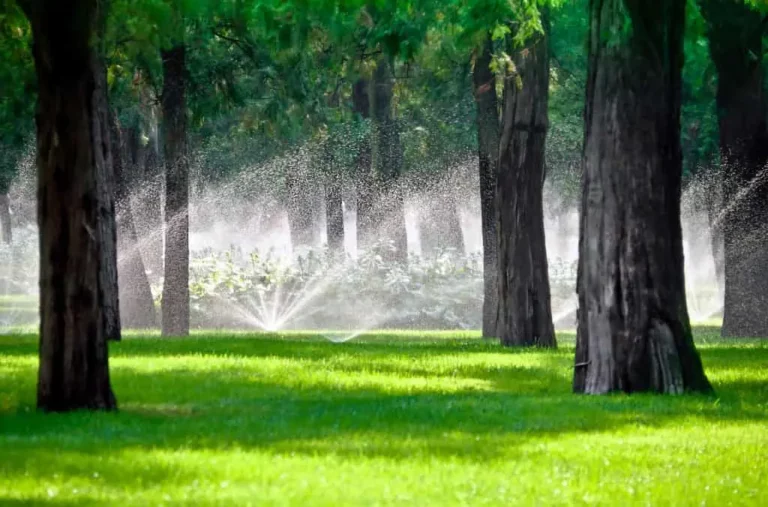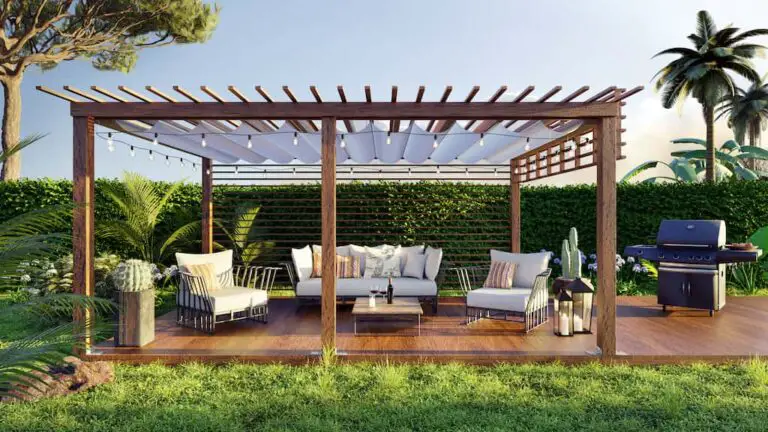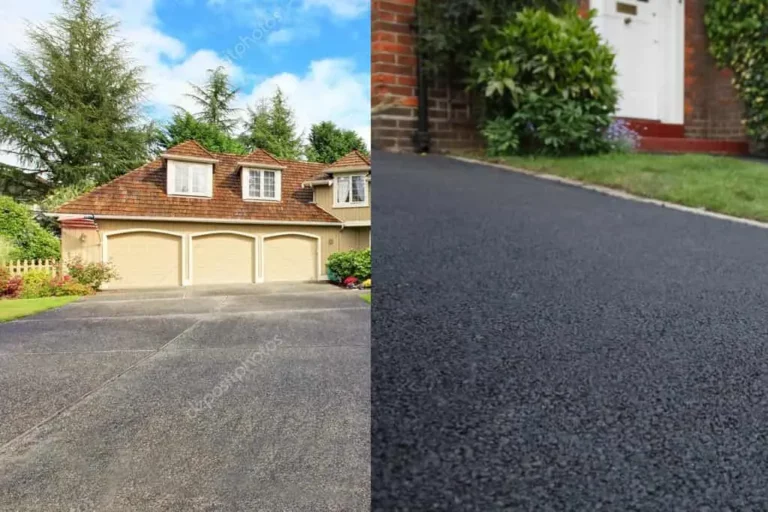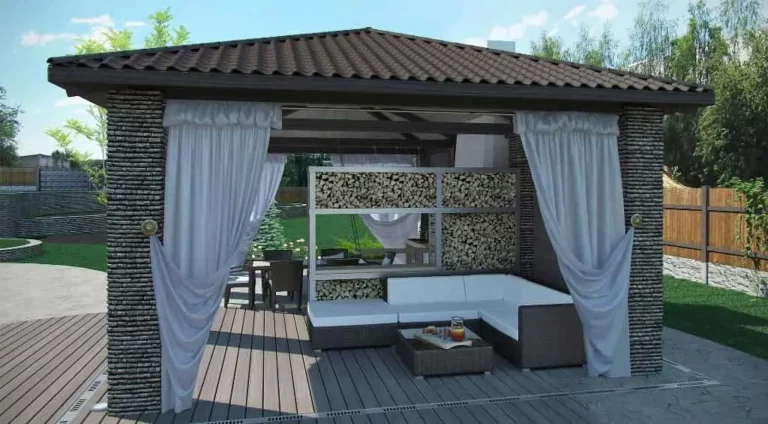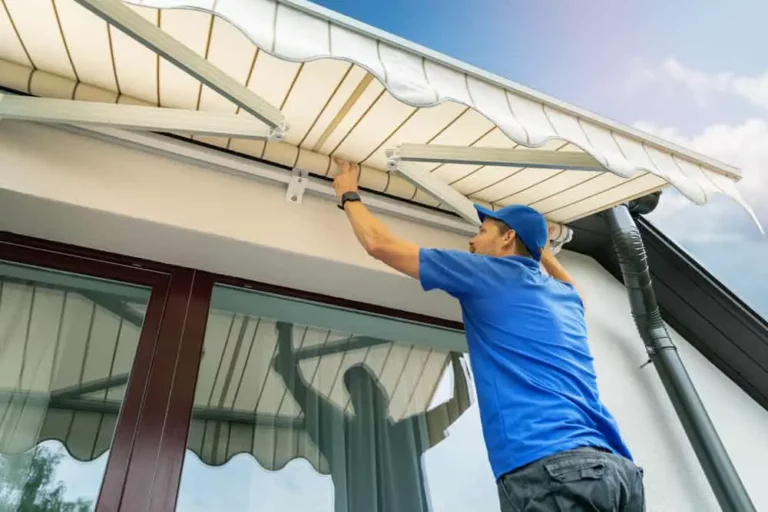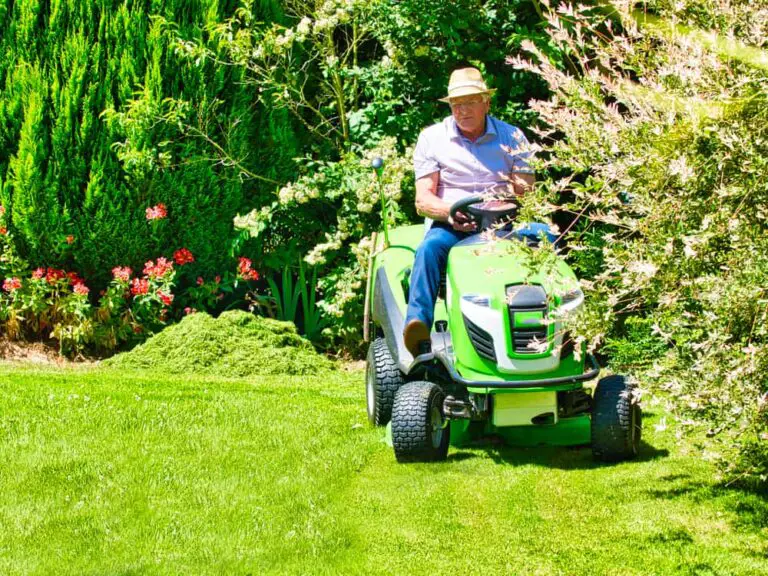How Tall Should A Treehouse Be?
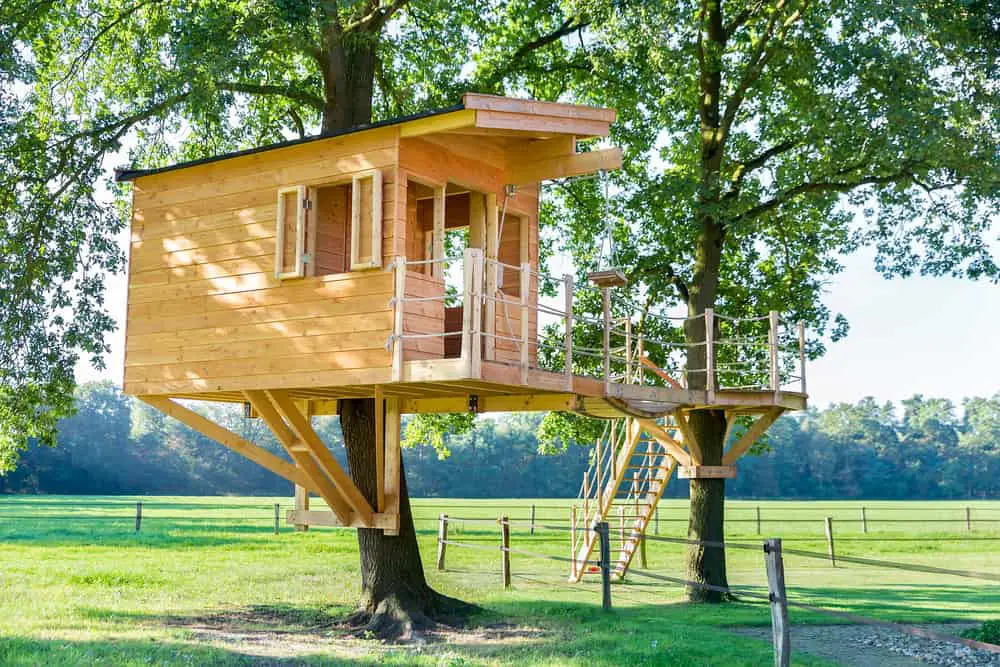
There will come a time in many dads’ lives when their children insist that he build them a treehouse. Decline the demand, and the children will plan to build one themselves. Building a treehouse is an awesome gift for your children. However, certain safety measures should be considered; for example, how tall should the treehouse be?
A well-planned, well-built treehouse meant for the enjoyment of young children should be 6 to 10 feet tall and not any higher than 13 feet. A railing with vertical wood slatsand a minimum height of 36 inches, separated by no more than 4 inches, should be erected on any treehouse platform.
Treehouse construction has risen in popularity in the United States. Most children’s wish lists include treehouses; however, few ever get one. On the other hand, the popularity draws attention to the issue of safety. Accidents happen, and building a treehouse that’s essentially dangerous to use, won’t let you win any father of the year awards.
How Tall Should A Treehouse Be?
How high will a youngster be off the ground if he climbs on the safety railings or out the window? What height prevents a spinal or head injury? Assuming there’s a soft surface to buffer the fall, 6 to10 feet is generally a safe estimate.
Keep the treehouse on the lower end of the range if you are more protective of your children, somewhere between 6 to 8 feet, especially if you have small children.Playing in tree houses is a child’s dream.
Though a tree home can provide hours of entertainment and pretend play, it can also result in terrible injury. Falls are the biggest cause of unintentional injury in children, with falls from considerable heights and onto hard surfaces being the most dangerous.
How High Can You Build A Treehouse?
Asking the local building authority is the only method to know what you can and cannot build. Treehouses are classified as ‘temporary buildings,’ similar to a garden shed.
In this situation, the maximum height restriction will be roughly 13 feet, which is easy to exceed when building a treehouse because it is measured from ground level to roof peak.
Before you begin planning or building a treehouse, you should consult with your neighbors, as many concerns begin with someone next door who believes the treehouse is unsightly or overlooks their land.
You could face penalties, litigation, or demolition orders if you start building without consent.
Best accessories for your treehouse check in Amazon.
Do You Require A Permit To Build A Treehouse?
It depends on the type of your treehouse and local legislation. If you’re thinking about building one that will be visible to your neighbors, talk to them first to avoid any issues.
When a neighbor complains, the municipality is frequently involved. Avoid building a treehouse near property lines or where it will impinge on a neighbor’s privacy.
Unless connected with electricity and water, a treehouse (accessory construction supported entirely by a tree or trees) does not require a building permit. Still, it must meet the local zoning standards.
How Dangerous Are Treehouses?
Treehouses built at a low height reduce the risk of getting seriously injured when falling from one. According to Nationwide Children’s Hospital, almost 2,800 children are admitted for treatment due to injuries relating to treehouse accidents each year.
The number might seem insignificant compared to other accident causes, but the danger is there nonetheless. Spinal and head injuries can seriously affect children and their families.
Additional Treehouse Safety Precautions
The height you choose to build the treehouse is not the only safety precaution that needs consideration. Other factors can help protect your child when playing in the treehouse, although the distance to the ground is probably the most important.
Build The Treehouse In A Safe Tree
Choose a healthy, long-lived hardwood with load-bearing branches at least eight inches in diameter (larger if the species is softwood) for maximum support. Maple, oak, fir, beech, and hemlock are the best trees.
It must be in a secure site away from traffic, with no risks such as above-ground tree roots, thorny plants, garden rocks, or waste such as broken glass or scrap metal in the immediate vicinity.
If you want to support your new treehouse with more than one tree or more than one branch on the same tree, look for the following characteristics:
- Tree trunks should be a minimum of 12 inches in diameter, and supporting branches should be 8 inches.
- Near the tree, there should be no electricity cables.
- Support branches should ideally extend out from the trunk at almost 90-degree angles for the greatest strength.
Design A Safe Treehouse
Build the platform as near to the trunk as possible, then add diagonal bracing for extra stability. Place the load over the tree’s base, not on one side. Consider dividing the weight of a large tree home among multiple trees.
In severe winds, a treehouse will operate as a sail, imparting a significant load to the tree’s roots. Build your treehouse at the lower part of the tree in high-wind zones. When building on one major trunk, cantilever the beams and support them from below to level the main platform.
As is required by code for all decks, the treehouse platform should have a railing with a minimum height of 36 inches and vertical balusters separated by no more than 4 inches. Avoid horizontal balusters that children of all ages can climb. If the treehouse is built extremely high, you might want to comply with the 42-inch residential requirement for balconies.
It’s much better if you create the treehouse so that the walls are built around the perimeter of the platform and are solid with no low windows, but you should still construct a railing around the door and any landing places.
Make Sure You Are Building A Safe Treehouse
To keep a huge treehouse stable, distribute the weight across numerous branches and center it over the trunk. If the floor is level and can sustain the entire weight of the treehouse, the rest of the construction will be much easier to construct.
If the floor is level and can sustain the entire weight of the treehouse, the rest of the construction will be much easier to construct.
When building a DIY treehouse, consider some of the following suggestions:
- Use fasteners when leveling the beams across branches.
- Where possible, place beams between the trunks of various trees.
- Support the beams above or below by torquing them out from a single trunk.
Regular wood screws or nails should never be used to attach treehouse supports to the tree trunk or a limb. Apart from the problem that traditional fasteners aren’t lengthy or bulky enough to give required support, you’ll need more than one, and trees don’t enjoy having fasteners driven into them in close proximity.
When fasteners are driven into trees closely (less than 10 inches apart), a tree will sectionalize the area around the fasteners, typically resulting in deadwood that can no longer support the fasteners.
If you are using multiple supports, ensure that the bolts are separated by a minimum of 12 inches vertically and horizontally. Use fasteners that can withstand the weight of the planned treehouse.
When using lag screws to attach fixed supports, the screws should have a minimum diameter of 3/4 inch, but 1 and 1 1/4-inch screws are preferred.
Use treehouse attachment bolts (TABs) to join support to two trees or two branches on the same tree. These connectors allow the support to move independently of the tree.
When building a platform deck around a tree trunk, leave a 2-inch gap to allow the trunk to develop, which will keep the deck from buckling and safeguard the tree.
Provide Safe Access To The Treehouse Platform
It’s critical to make the treehouse platform accessible. A rope ladder may be appealing, but it is also a strangulation hazard and inappropriate for tiny children.
A rope ladder is suitable for older kids if you build a staircase or ladder with a 60- to 70-degree slope. As long as you make it out of strong rope, inspect it often by pulling it from the ground; a rope ladder can work.
Ensure there is enough room for a landing at the top of the ladder or stairway, with a wall or railing surrounding it.
Conclusion
Technically, you can build a treehouse as high as the local municipal codes. But any loving parent with small children, who has their safety at heart, will opt to build a treehouse between 6 to 10 feet, instantly minimizing the risk of getting injured should a falling accident happen.
